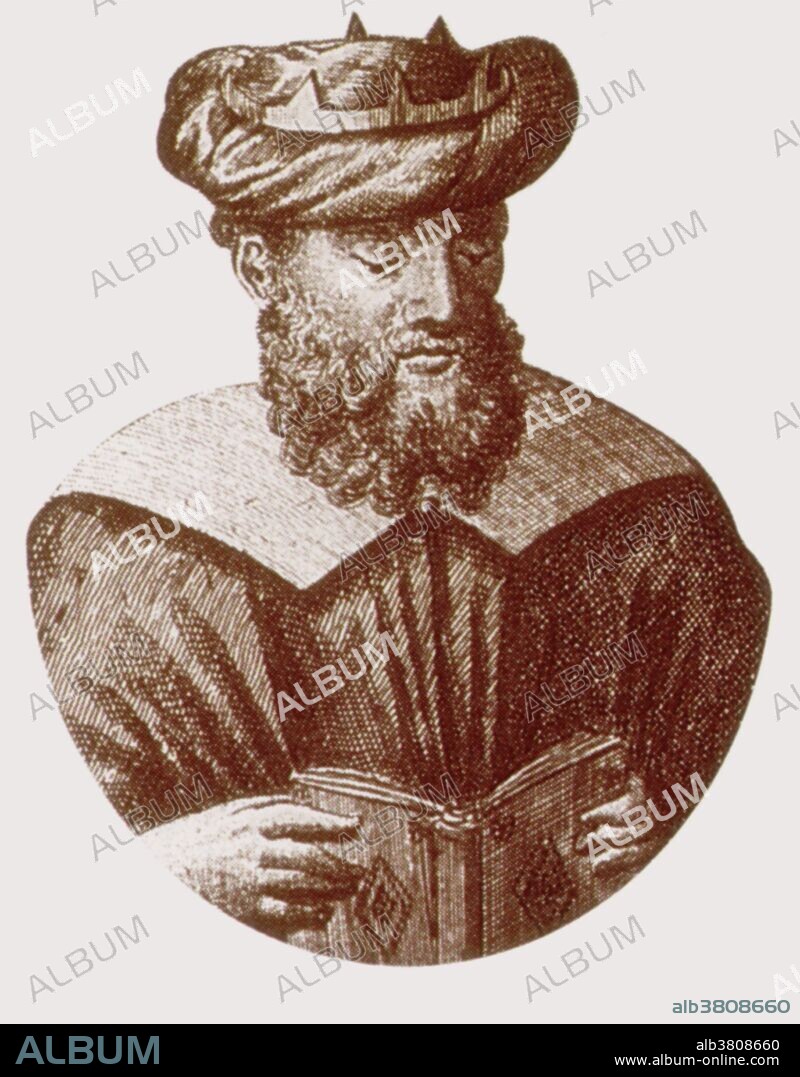alb3808660
Avicenna, Persian Polymath

|
Zu einem anderen Lightbox hinzufügen |
|
Zu einem anderen Lightbox hinzufügen |



Haben Sie bereits ein Konto? Anmelden
Sie haben kein Konto? Registrieren
Dieses Bild kaufen.
Nutzung auswählen:

Titel:
Avicenna, Persian Polymath
Untertitel:
Siehe automatische Übersetzung
Abu 'Ali al-Husayn ibn 'Abd Allah ibn Sina (980-1037), commonly known as Ibn Sina or by his Latinized name Avicenna, was a Persian polymath, who wrote almost 450 treatises on a wide range of subjects, of which around 240 have survived. His most famous works are The Book of Healing, a vast philosophical and scientific encyclopaedia, and The Canon of Medicine, which was a standard medical text at many medieval universities. The Canon of Medicine provides a complete system of medicine according to the principles of Galen and Hippocrates. His corpus also includes writing on philosophy, astronomy, alchemy, geology, psychology, Islamic theology, logic, mathematics, physics, as well as poetry. He is regarded as the most famous and influential polymath of the Islamic Golden Age. A severe colic, which seized him on the march of the army against Hamadan, was checked by remedies so violent that Ibn Sina could scarcely stand. On his deathbed he bestowed his goods on the poor, restored unjust gains, freed his slaves, and read through the Qur'an every three days until his death. He died in 1037 at the age of 58.
Bildnachweis:
Album / Science Source / New York Public Library
Freigaben (Releases):
Model: Nein - Eigentum: Nein
Rechtefragen?
Rechtefragen?
Bildgröße:
2592 x 3317 px | 24.6 MB
Druckgröße:
21.9 x 28.1 cm | 8.6 x 11.1 in (300 dpi)
Schlüsselwörter:
ALCHEMIE • ASTRONOMIE • BERÜHMT • BERÜHMTE PERSÖNLICHKEIT • GEOLOGIE • ILLUSTRATION • ILLUSTRATIONS • ISLAMISCH • LOGIK • MANN • MOSLEM (MUSLIM) • NATURWISSENSCHAFTLER • NOTABEL • PERSON • PERSöNLICHKEITEN • PERSÖNLICHKEITEN • PHILOSOPHIE • PORTRAIT • PROMINENZ • PSYCHOLOGIE • WISSENSCH.: ASTRONOMIE • WISSENSCH.: PHILOSOPHIE • WISSENSCHAFTLER • WISSENSCHAFTLICH
 Pinterest
Pinterest Twitter
Twitter Facebook
Facebook Link kopieren
Link kopieren Email
Email
